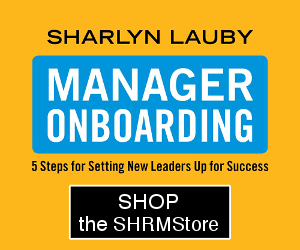There. I said it. No one wants to participate in role play exercises. In fact, I think the only people who actually like role plays are old school instructional designers (I try to avoid them when I design) and far too many HR pros.
Sure, people suggest role plays all the time. But recommending a role play and raising your hand to actually do the role play are two totally different things. As a training consultant, I have never heard more groans and fidgeting than when I say, “let’s do a little role play activity.” And the only way to get volunteers is to threaten imply that postponing the activity only results in the session running late.
And, once you get the volunteers, they inevitably mumble and bumble their way through the exercise – always in a hurry to get back to their seat. Or, they take it totally over-the-top to make it as entertaining as possible. Either way, the point of the role play is almost always lost to the bumbling or over-acting. You spend most of the debrief explaining what should have happened, so really…what have you accomplished?
The next time someone asks you about including a role play in your training, simply suggest breaking the group into dyads or triads and having them do the “role play” among themselves. The trainer can walk around, monitor progress and answer questions.
Or take a typical role play scenario and write it up as a case study for small groups to discuss. Participants are happy to discuss problems and case studies in small groups. And they will even select a spokesperson who will report out to the group. Now, I’m being slightly sarcastic here but participants don’t mind discussions (not too much at least).
But they don’t want to play act in front a group of their peers. Trust me on this one. Declare the role play passé and create some better ways to achieve the same outcome. Your participants will thank you for it. And they will still actually learn something along the way.







TheHRD says
I don’t have to train these days, thank the Lord. But nothing used to make my stomach turn more than the night before delivering when I was reading through the notes for the first time (‘cos I’m a pro like that!) and seeing “Role Play Exercise”.
Actually, tell a lie….”Ice breaker” has pretty much the same effect.
Powerful one on one. Ridiculous buffonery in a group scenario.
Corey Feldman says
I find role playing can be very effective, especially if you know your audience. I do think it is over/misused, but that is usually the fault of the practitioner not the technique.
Tammy Colson says
Role play…
Having delivered, designed or critiqued training and trainers for 15 years, I have only found a FEW exceptions to the “role playing is useless” rule. That exception being in sales training. And even there, it needs to be used infrequently.
I agree, Sharlyn – case studies tend to get the message delivered, and more active participation, than just giving the class clown – or the shyest person in the room – a stage upon which to embarrass themselves.
John says
I worked for a firm that required two (and sometimes up to four) role plays a week. I absolutely hated it and it sucked, hard.
Eric Peterson says
Whenever I train and see “Role Play Exercise” in the design, I do exactly what you suggested and have everyone do the role play at their seats, all at the same time. SOMETIMES, I do triads and ask each triad to select a “leader.” I will then reward those who step up by announcing that the leader’s job is to observe the other two do a role-play (because I’m mean like that). Of course, it’s then the observer’s job to speak to the large group at the end of the exercise and communicate what s/he saw.
I agree that everyone hates the idea of role-playing, but it’s not because they hate the acting part – they hate the BEING WATCHED BY ALL OF THEIR CO-WORKERS part. The assuming of character and trying on new behaviors in a role-play can be very educational, even if no one (or only one person) is watching.
Another thing I’ve done that’s not quite as hated as the improv-style role play is a scripted role play followed by a conversation. I’ll hand a script to two people, ask them to read it aloud at full voice, then ask the rest of the room, “what just happened there” or “what could Ben have done differently with regard to Jessica’s concerns” and stuff like that. It gives natural extroverts a chance to “shine” but doesn’t allow them to try for laughs at the expense of your learning objectives.
Sharlyn Lauby says
I love all of the comments and suggestions!
@TheHRD – hadn’t really thought of icebreakers in that way…but you might be right. There are some hokey ones out there.
@Corey – I agree the practitioner plays a part but not sure that they entirely control the outcome.
@Tammy – Couldn’t have said it better.
@John – No one should have to role play 4x a week. I’m speechless.
@Eric – I’ve done the improv-style role play too. It does get a better reception than having people make up their own (because they are only doing what the script said.)
Susanne says
I must confess that I despise all sorts of interactive drivel when I am a participant in any sort of training. I am not there to interact with people, I’m there to learn something! (and no, I’m not an antisocial introvert!) I don’t even like the group break-outs because inevitably there are only one or 2 people in the group who will participate on any level. (and I end up being one of the only ones. Every time!) I find most of these activities only serve to kill time. EVERYONE hates doing them. It all feels a bit silly and childish. Just sayin.
Marty says
I would tend to disagree that you can gain the same results from case studies as with role plays. I agree that role plays are not popular with students, and because of that fact trainers often down play their importance. This is often to make the trainer feel better or feel better liked. Students can grasp concepts and ideas from discussions and case studies and can tell you what they should do. However, many people cannot make the jump of the concept to the actual performance of skill until they are asked to do it. One cannot build competencies like negotiation, communication, or interpersonal skills form case studies alone. Role playing forces the learner to articulate exactly what they would say to demonstrate the skill. This is hard for most people, but once they do the activity, however painful it is, they benefit from the experience. Also, role playing is always best done in triads, where everyone is given the opportunity to practice using the skill. No one should ever be asked to try and demonstrate a newly learned skill in front the entire group of peers, without practicing it first at least in a small group of three. Only someone who has shown the ability to perform the skill should be asked to do so in front of everyone.
Benjamin McCall says
Hey Hey now –
I think role-plays can be beneficial in the right instances. I don’t like them all the time but in, certain cases, sales training for example it can be very beneficial. I have facilitated and been been in situations where people dreaded them at first then ultimately thought it was the best thing that had done because of the ‘way’ it was done.
It all depends.
Sharlyn Lauby says
@Susanne – When it comes to my own personal development, I’m with you – back of the room and don’t ask me to participate in anything. I love listening to people that I totally disagree with and then taking time afterward to process their comments. But I’m probably the exception and realize activities are important.
@Marty – I like the idea of using a triad for practice followed with a role play. It gives participants more confidence and could create a better debriefing process. Thanks for the suggestion!
@Benjamin – Thanks for chiming in. Love to hear your thoughts on ways to get participants to buy-in…
Duncan Dickson says
Sharlyn,
I disagree, however it is not a one size fits all world out there. A lot depends on the industry, the sophisticaiton of the audience, and the expertise of the facilitator. We have had great success with iRoleplay; where we have trained interactors playing many of the parts and have trainees playing the key line or management parts and then the rest of the group and the facilitator have the opportunity to alter the scenerio as it moves forward.
Karalyn Brown says
I think most people loathe these and are too nervous to participate in front of others, so it kind of defeats the exercise in helping someone develop the skills and having others assess them. One thing I have been doing lately is briefing two confident people in the audience to act out a “good” example and a “bad” example. Other people can practice in their own time if they wish, but so often nerves get in the way of the exercise having value.
Jake says
Although I’ll take a different drink (point of view) than the bartender, the responses that suggest alternatives were eye-opening. Although we don’t use role-playing often in our industries’ training programs (nuclear power), it is one tool in the toolbox for instructors / designers to use. The discussions here have given me some information to put into the pro’s/con’s part of our instructor training program.
My primary response is to abuse Mr. Lincoln’s “you can’t please all the people…”, and say that learning / changed performance CAN happen when people are uncomfortable (discomfort sometimes being necessary to cause change), causing discomfort should not be the goal of the training, and it is certainly preferable to generally have fun in training!
Great discussions! I’m bookmarking this “bar”… one place I can “consume” while at work!
Sharlyn Lauby says
@Duncan – I tried doing a little searching for iRolePlay and not sure I’m landing in the right place. Can you post the link? Looks like it’s similar to Second Life. My thought is a web-based role play is a totally different animal. It’s way easier to act virtually than at the front of a crowded room of your peers.
@Karalyn – I like your suggestion. If I’m team training, I find doing the role play with my co-facilitator can be very effective.
@Jake – Welcome to the HR Bartender community! For me, your comment emphasizes the need to provide ‘train the trainer’ programs. It’s not enough to have great platform skills. To be successful, trainers need to know how to deal with the unexpected.
Bob Sutton says
Role playing, when done right, will transform people. I have done them a very particular format that in my humble opinion and in the evaluations of participants is effective better than 95% of the time. Rules I have:
We use real issues, yours, people conversations that must be had and most of us hate to do.
The expectation is that everyone will participate and do two one as skill builder the other as the object example, difficult employee.
The discussion, role play, gets thought out ahead of time using a particular model for having effective discussions. We do not go into the role play blindly.
The facilitator actively coaches both parties ahead of time and during the role play actively coaches the skill builder, we take a break, back up, try another tactic.
People build skill, learn a process and model, get immediate feedback and have an action item for the next day at work.
The worst role plays are the ones you do in diads and triads, totally useless.
My humble opinion. I will do a blog on this at http://prothinksolutions.wordpress.com
Bob Sutton
Sharlyn Lauby says
Thanks for the comment Bob. I look forward to reading your post!
Sharlyn Lauby says
Hey everyone. If you have an interest in iRolePlay, Duncan sent me a copy of his whitepaper on the subject. I’ve added it as a hyperlink on his comment above. Happy reading!
Corey Feldman says
@Sharlyn Lauby I agree, trainers don’t entirely control the outcome, but that is why it is important to know your audience. With the right facilitator and audience it can be a powerful training tool. But I won’t typically use it if I am going in cold.
Kate C says
We use behavioral simulations instead of a classic role play.
Teams/groups work together to dicsuss and debate the most effective methods for handling a scenario. The facilitators then take the role of the employee/customer/etc in the scenario and the table operates as one person the manager/service representitive, etc. This way the quiet folks can give input on effective strategies, and the more vocal members can look to each other when they get stuck. We then stop the activity and we give feedback and ask the entire class what they liked and what they would change about the way the situation was handled.
Participants get live practice in the behaviors we are discussing, or they get to see their ideas put into action. We’ve received amazingly positive feedback and the participants feel safe as they gain new perspectives!
Sharlyn Lauby says
@Corey – I think you’re bringing up an excellent point about audience analysis. In my experience, there can be a disconnect between the people asking for a role play to be built into the training and the participants. If the audience wants a role play – terrific. But I find that to be the exception.
@Kate – I agree that simulations are much better received. Thanks for sharing!
Oh and Bob published his post on role plays, titled “Role Plays: What’s the Use?” You can check it out at – http://prothinksolutions.wordpress.com/2010/04/16/role-plays-whats-the-use/
Dan McCarthy says
Sharlyn –
I agree, I’ve had the same experiences with role plays. A golden rule for trainers: don’t ask your trainees to do anything that you can’t stand doing.
I also agree with the comment about simulations. When we have managers “practice”, or demonstrate a skill, like interviewing, they’re OK with it. It’s real, like a flight simulator, and their competitive nature motivates them to get it right in front of their peers.
Jim Ericson says
Sharlyn. You’re right, but I don’t think you went anywhere near far enough; it’s not just that people don’t like them, it’s that they do far more harm than good. First, they create a one-up one-down relationship between the trainer who”judges” and the trainee who’s “on trial.” I’ve been there. Done that. And, I’ve learned the hard way that “walking the path” with folks I’m trying to help is the only way to get them genuinely involved in any learning opportunities you provide. Second, they create the impression that if you can only say the right words, you’ll be perceived as genuine. Not so. The right words combined with the wrong intent – indifference or malevolence for example – come across as manipulation. My favorite cartoon has two cows “talking in a pasture. One says to the other, “If I understand you correctly, you’re saying ‘Moo.'” She must’ve just returned from a class in active listening. Third, the willingness of folks to employ what they’ve “learned” back at the ranch has roughly the half-life of an egg roll, and it certainly dries up completely the first time somebody says, “Oh, you must have been in that XYZ workshop.” I could go on and on, but I’ll spare you the time. And, let me leave you with a couple of questions. One: When are people – especially those in HR and training – going to wake up to the fact that employees are human beings and not human resources? Two: How about if trainers bring folks together to have real conversations that help them develop real insight into real situations involving real people instead of bringing them together to play act? When is corporate America going to realize – as Einstein said, “Not everything that can be measured matters, and not everything that matters can be measured.” Cheers!
Sharlyn Lauby says
@Dan – Thanks for adding to the conversation. I agree with your comment about simulations. But I always thought rule number one for trainers is “the mind can absorb only what the rear can endure.” ha!
@Jim – Lots of good thoughts – thanks for sharing! I thought your ‘egg roll’ comment was particularly important. If training becomes too cookie cutter, it can have the opposite effect. That’s where, as several others have mentioned, the skills of the trainer are key.
Eleanor Reali says
Great topic, and gee, what a nice place you have here!
Another way role plays can be useful is to give participants a chance to say out loud something they may never have said before, getting past the discomfort in a safe environment, or at least safer than back at the office. (This perhaps just expands on the “simulation” described by Kate C and others.)
Examples include giving tough feedback and seeking information or input, especially from someone very different from oneself. I’ve been both a participant and facilitator with this type of topic, and people appreciate the chance to practice these potentially difficult and/or emotional conversations. Lightning doesn’t strike, and our partners don’t end up hating us or running from the room.
The triad structure works great for this (two speakers, one observer), and some scripted examples (or demonstration) can help to get things started. If possible, it can be very effective to do two rounds… one to try it out, and another to try again. During the second round, people often “get into it” and the conversation becomes more authentic.
Thanks again for a super discussion. I look forward to sampling more!
Jim Christian says
Now a business executive, but former teacher. My comments are based on both experience and exposure. Role “playing” is just what the name suggests (PLAYING); there is nothing real about the situation, no mater how it is presented or staged, and I have never experienced, or retaineded anything informative, creative, or adaptively helpful from a role playing situation. Come on people, “grow up”, playing is for kids. If a trainer can not communicate in another fashion, then they need to find a different job, teaching is not their forte.
Corey Feldman says
@Jim that is pretty harsh. Just because a teaching style doesn’t work for and/or with you, doesn’t mean the trainer should hangup his or hat. I have spent my career (not to mention a chunk of my teens) teaching, coaching and/or training in athletics, academics, and mainstream corporate America. I have worked with toddlers, teenagers, and for most of my career, adults with the broad spectrum of education and pay grades. And in my experience if you underestimate the nature, purpose and effect of play, you underestimate a tool nature has literally hardwired into our brains. Sure we play different as adults than we do as kids, but play is actually a major way we learn at all ages.
Sharlyn Lauby says
Lots of good discussion here. Thank you for continuing to keep this conversation alive. I’m getting a lot of great ideas as a result.
@Eleanor – Welcome to the HR Bartender community! I agree it can be valuable for participants to say some things in a safe environment. But I have found that it’s becoming increasing difficult to convince participants to let their guard down and use training as a way to work through those matters. I’d be interested to hear if anyone else is experiencing the same.
I do find that being an external consultant has an advantage in those situations. Participants feel they can speak freely and ask questions without fear of being labeled or reported to senior management.
@Jim – As my post suggests, I’m with you where it comes to the “playing” comment. But perhaps I’m being a bit of a purist in drawing a distinction between teaching and training. I tend to think of teaching in terms of students and training in terms of adults. And each group has different learning preferences.
@Corey – I believe that fun can definitely be a component of learning. But I wonder when fun crosses the line into playing…do adults start to feel self-conscious? Thanks for the comment!
Valerie Noll, CPLP says
Wow – what a great conversation. I can’t resist throwing my two cents in. I play roleplaying games in my spare time. Honest to goodness, sit around a table and pretend to be a fighter/magic-user/thief type games. I’ve watched more leadership development at my dining room table than I have in the formal development programs where I work. I do think that self-consciousness is the death-blow to roleplaying as a useful technique. The key is that it really should be play. When it isn’t, people don’t engage.
In a formal classroom situation, I’ve seen roleplay done horribly, and I’ve seen it done wonderfully. My favorite session was an all afternoon roleplay done for a class, where every single person had a part to play. We got so wrapped up in the story, we forgot the care about what we looked like. And in the debrief, the learning was tremendous, and I still apply what I learned there – that was 15 years ago.
From the point of view of a instructional designer, it is my responsibility to choose the best activity for the desired learning outcome, optimized for the audience. There is usually a better choice than role play, as many of the comments here suggest. However, in the less traditional methods of training delivery, such as computer interaction, virtual worlds, and the like, role play is much less initimidating and can be quite realistic if designed well. And I do believe there are some learning scenarios in the classroom that roleplay really does serve as the best choice, with the right topic, audience, and learning goal.
Sharlyn Lauby says
I’m glad you tossed in your two-cents Valerie. Excellent points about the emergence of virtual role plays – maybe Second Life will see a comeback.
I also agree that designing for your audience is key. That’s really the point of my post – if the participants don’t like role plays, then the designer should try to find other activities that will be effective.
Jim Ericson says
I just had to jump in one more time. Robert Fulghum – of “All I Really Needed to Know I Learned in Kindergarten” fame – who was a speaker at our Masters Forum program a few years ago, told a great story that I turned into a very different kind of “role-playing” exercise. The exercise was designed to help participants see and think differently when meeting to generate new ideas or new solutions to old problems. It has worked really well when I’ve used it. I blogged about it last November under the title “Crazy Is as Crazy Does.” Here is the link: http://conversationkindling.blogspot.com/search/label/Robert%20Fulghum. Check it out. If nothing else, the story he told is worth listening. And, if you’re willing, let me know what you think.
Sharlyn Lauby says
Thanks for sharing. Interesting post. I’m sure it was fascinating to hear Robert Fulghum tell the story.
Abby Yanow says
Sharlyn,
I think it’s great to question the use and appropriateness of activities, in general, and also in cross-cultural settings. Things that may be ok in the U.S. would not be OK everywhere.
I love the suggestion to do role plays in small groups; and – at the Boston Facilitators Roundtable we’ve done a variation on the large group role play – let’s say you have 4 people doing a role play in the center of the room. You allow other participants to give their input to the person playing the role – they can tap them on the shoulder and whisper in their ear 🙂 they can also take that person’s place and continue in that role.
http://www.bostonfacilitators.org
Sharlyn Lauby says
Thanks for the comment and suggestion Abby. I think it would be neat to see the Boston Facilitators version and how it gets debriefed.
Deimar says
Many do not participate, as they should, on this type of activities because they consider them immature and a waste of time. However, employees with a positive attitude about playing are more creative and have better teamwork, problem-solving and social skills. Likewise, they handle stress much better. For a company these activities are a great opportunity to spot these employees.